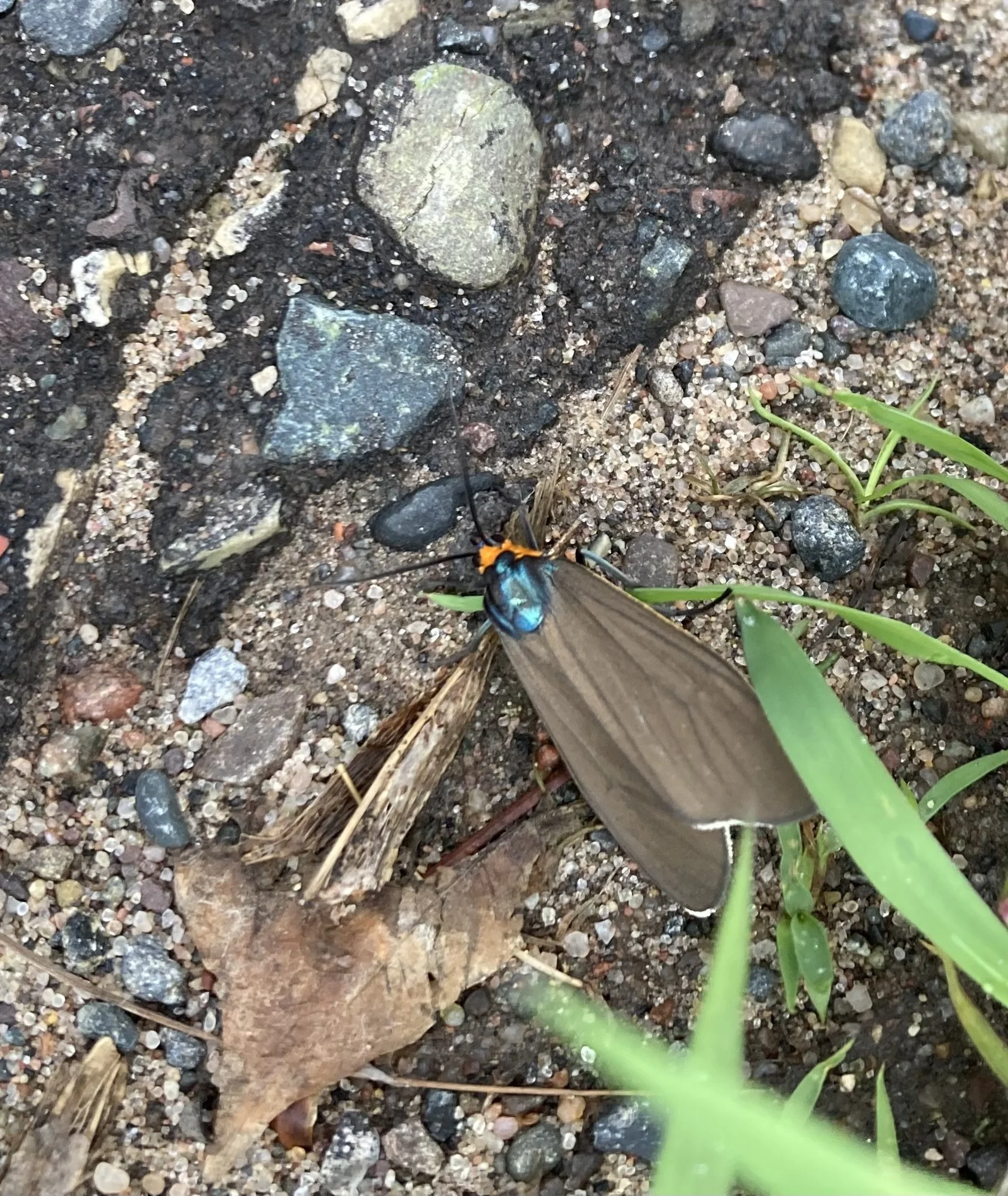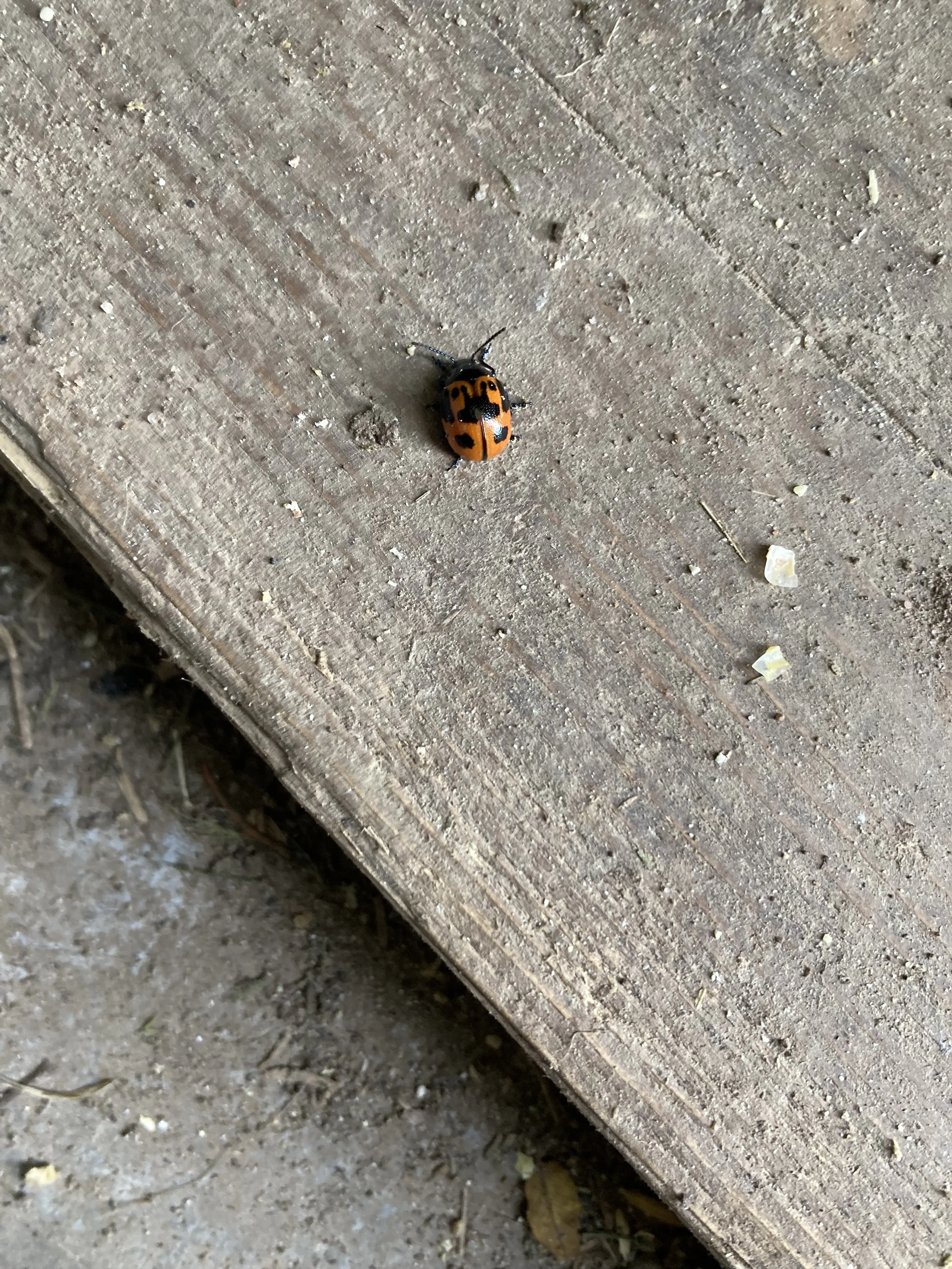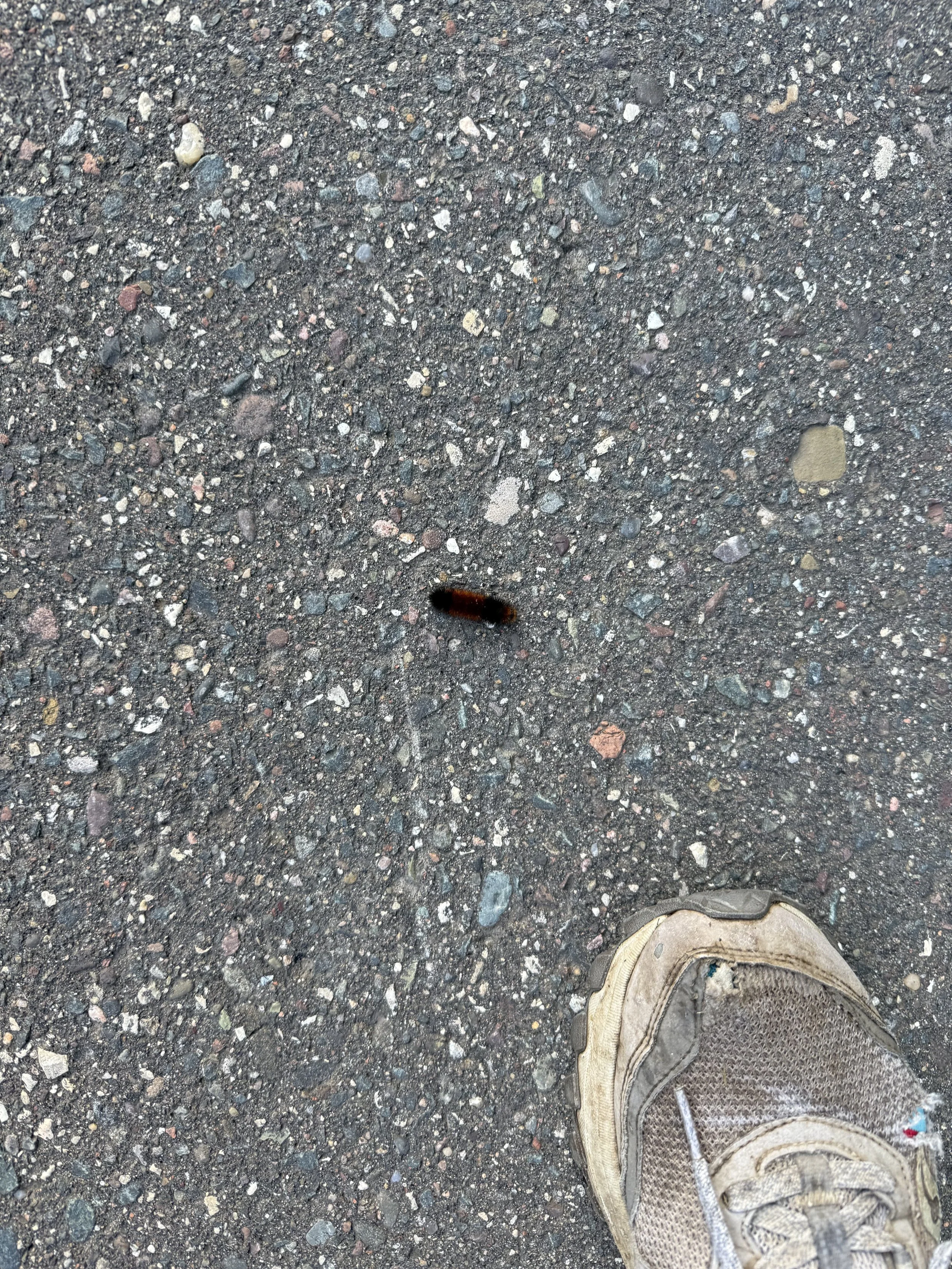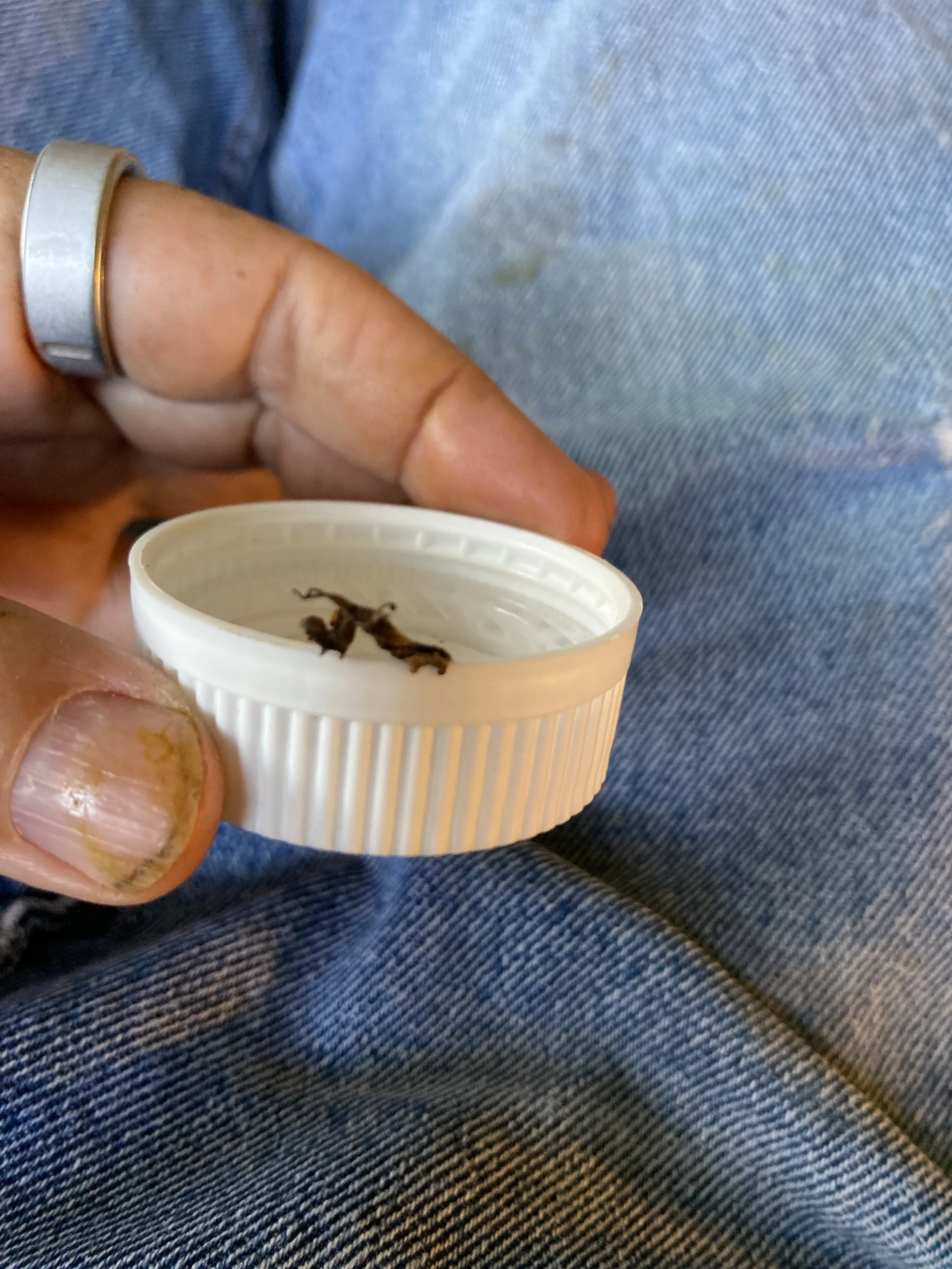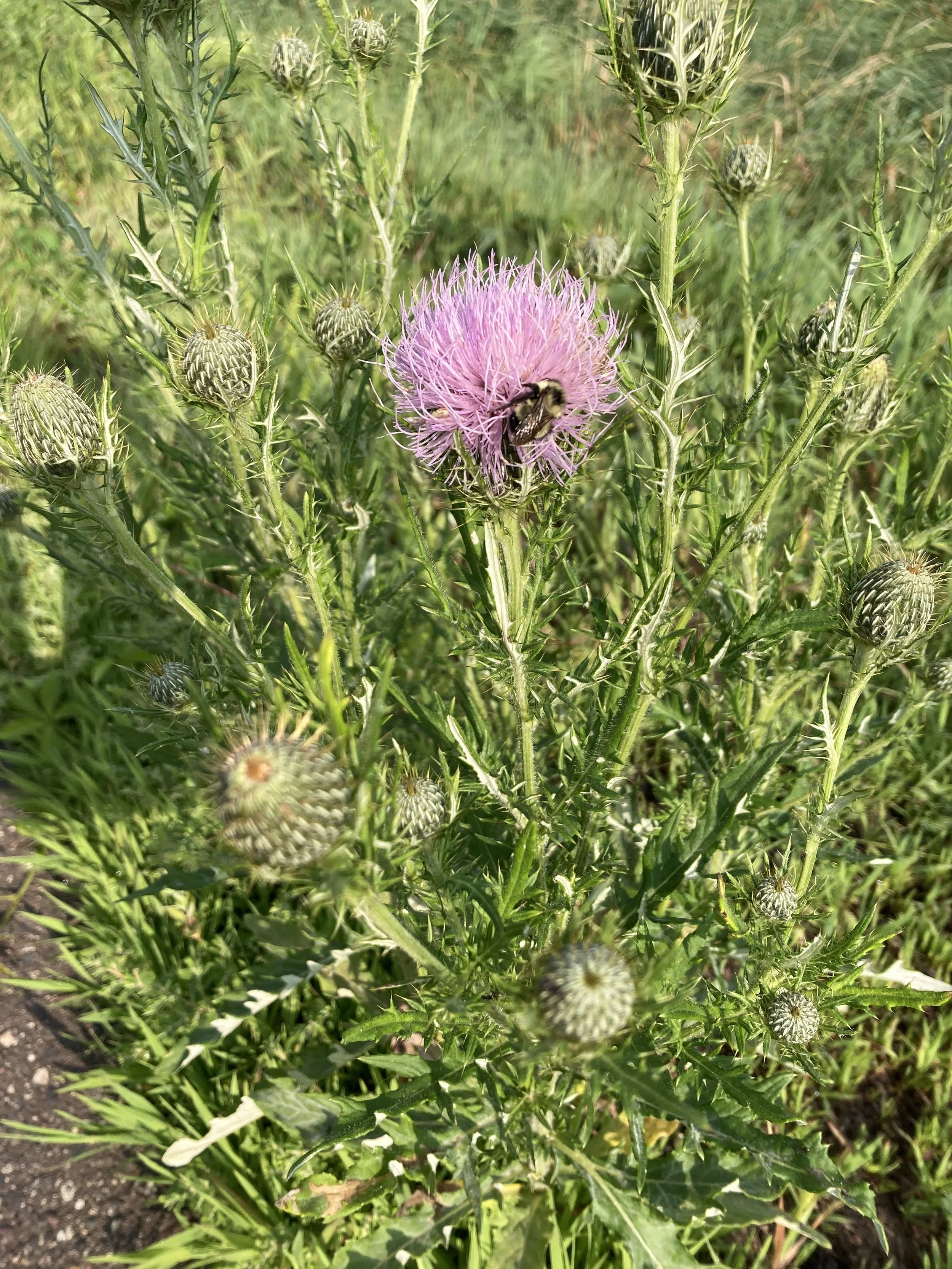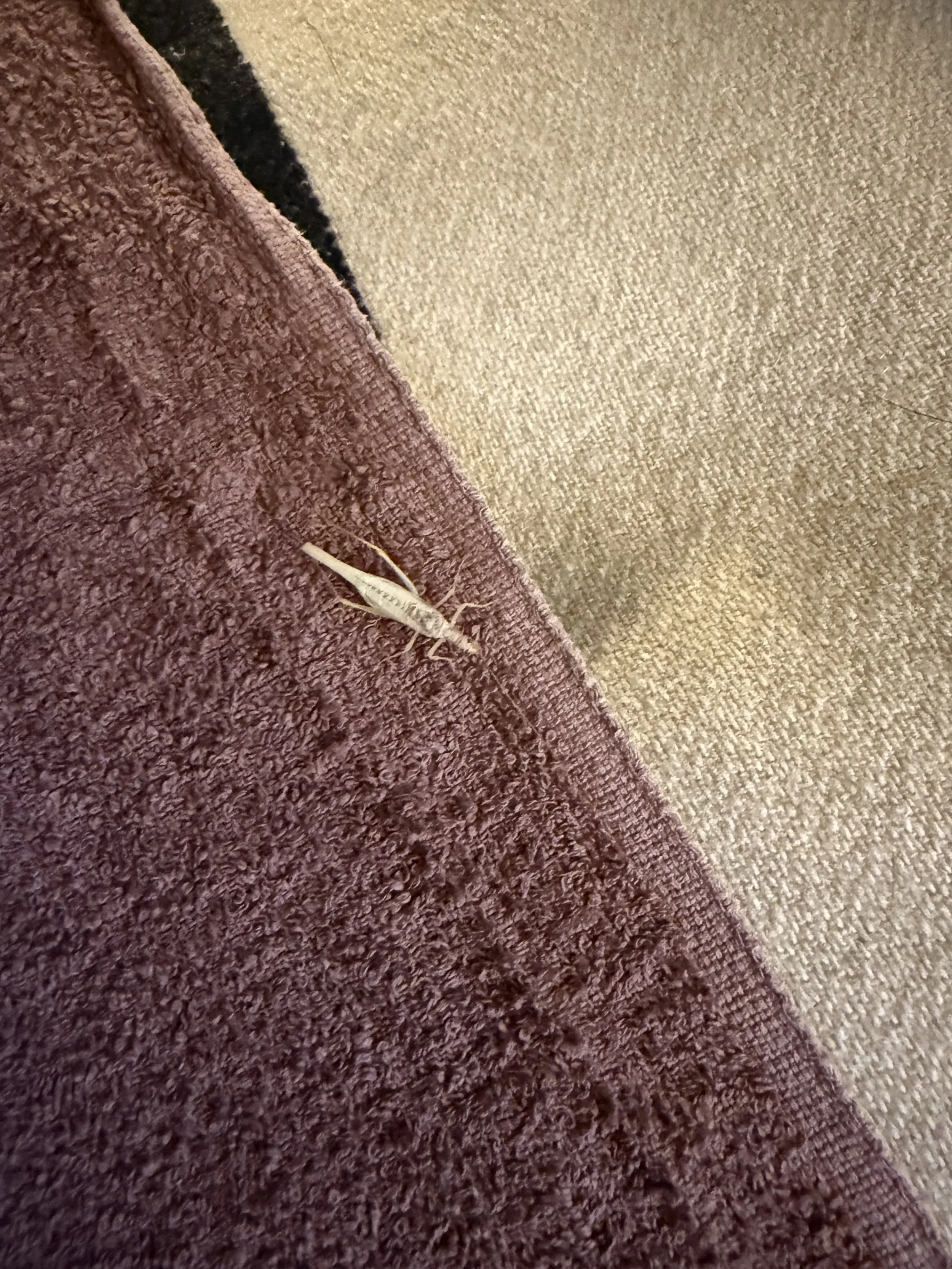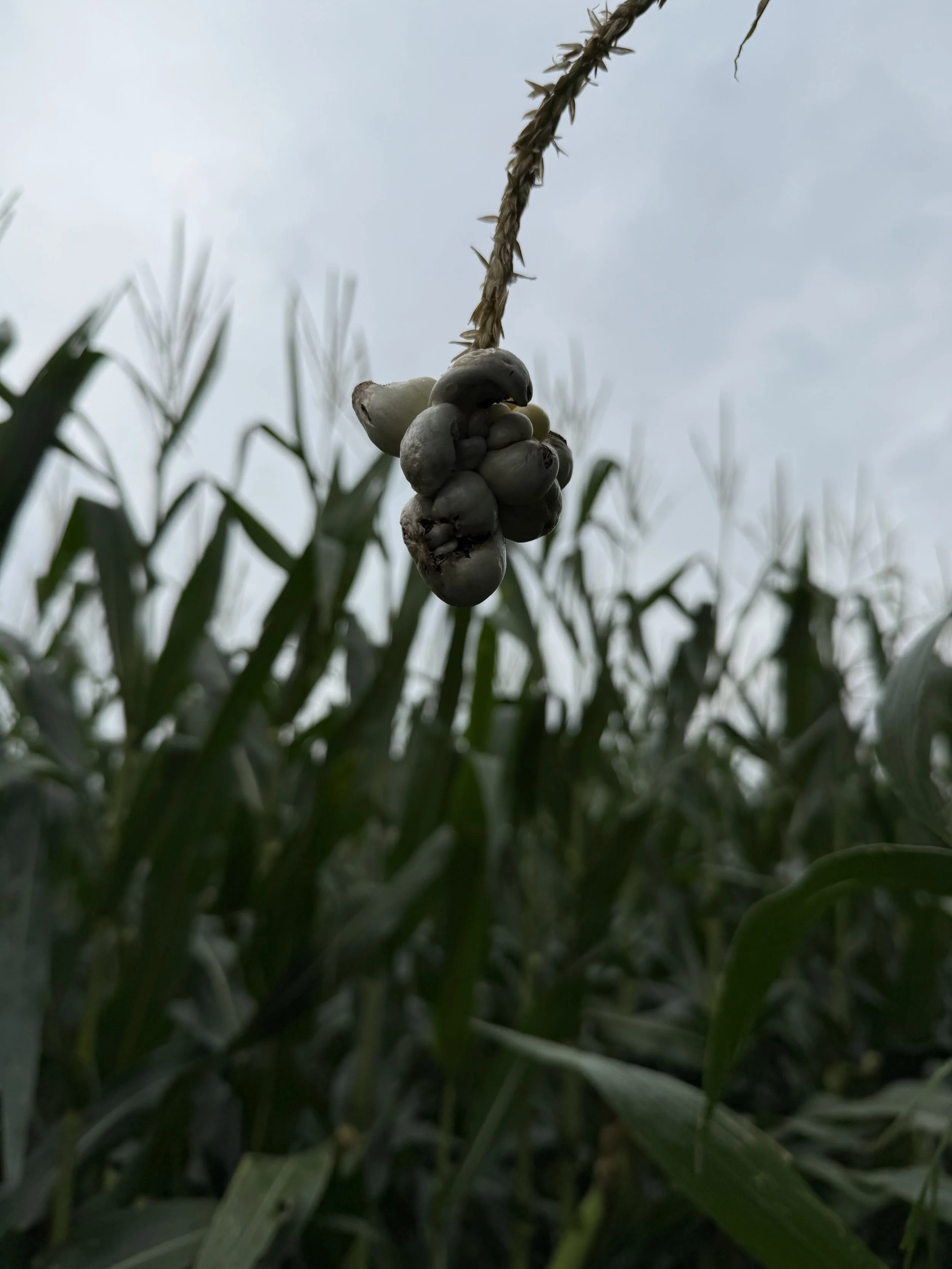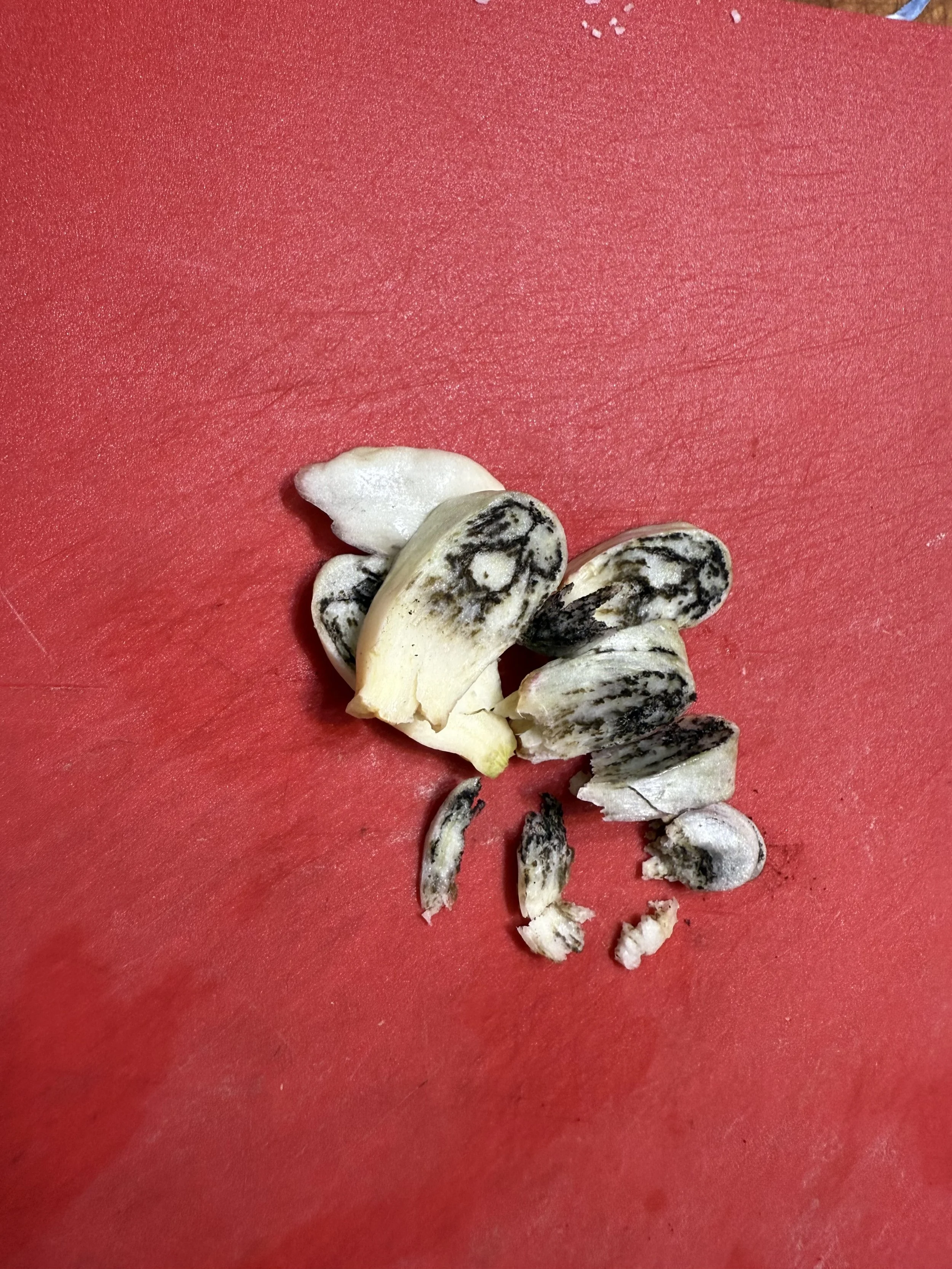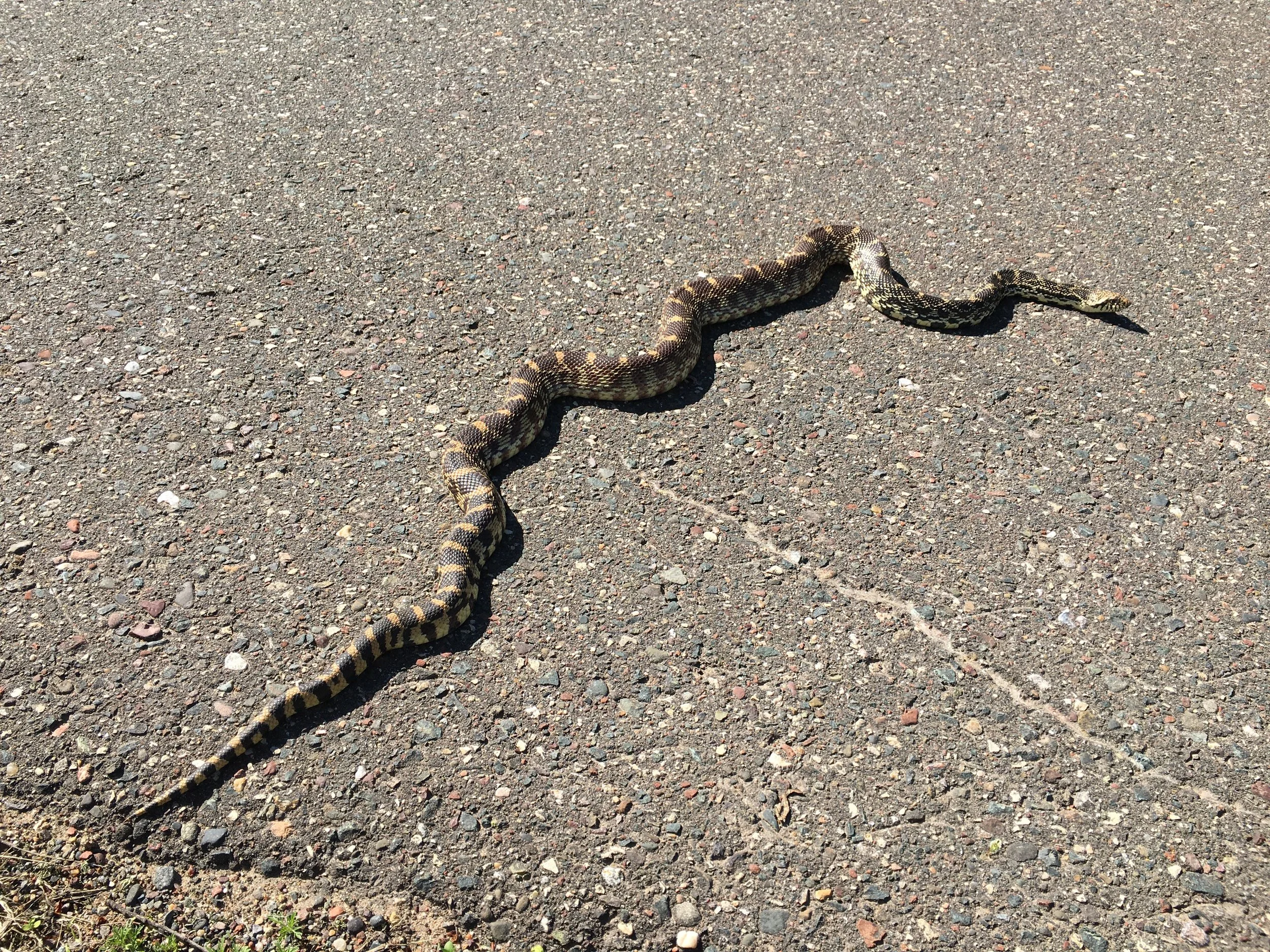Small things journal: animalitos de Dios
My father called insects, snakes, and various living creatures “animalitos de Dios”, or small animals of God. I remember the eldest Grand Girl stopping to peer at a burrowing bee on her way to daycare. I share her fascination with all that creeps, slinks, flies, buzzes, flutters, spins, burrows, bites, stings, and makes its living in this world. So I take photos in the hope of finding out who they are.
Like this cicada, they often are colorfully intricate. I grew up gathering cicada larva husks at my grandparents house in New Mexico. I remember being amazed by the perfectly round holes drilled all over the ground where the larvae emerged in the summertime. They are less common in Wisconsin.
This is a Virginia Ctenucha, a type of moth that feeds on irises as a caterpillar and on goldenrod as a moth. It caught my eye on one of my Zeke walks.
I tried to figure out who this is, but there are too many black and red beetles out there. Too large for a lady bug and the markings are wrong.
This may seem like another black and red mystery beetle, but its presence on milkweed helped me find out that it is a Red Milkweed Beetle. It shares milkweed with the monarchs…and is uninterested in my garden!
This is a hunting spider on a milkweed. I have made my peace with spiders, as they are everywhere I go and part of almost everything I do. They help control flies, gnats, mosquitos, and other pests. Not all spiders spin and weave, but most are my friends.
The top photo are the eggs of a Japanese Beetle, which is that shiny girl in the second photo. These beetles are invasive and voracious. There is a little red guy below the beetle. He’s the larva of a Colorado Potato Beetle. They are also invasive and voracious. I patrol the potato patches daily (ideally) and make war with these two pests. It’s a labor-intensive, icky job. So it goes if you don’t use pesticides but still want potatoes. Add potatoes to the list of vegetables I do not buy anymore because they don’t taste good from the store.
I’ve been watching the woolly bear caterpillars growing over the summer. They turn into Isabella tiger moths in the springtime. They freeze solid in the winter, reviving with the spring thaw. It is said that you can tell how cold the winter will be by the width of the brown band. I cannot corroborate this, but they do tend to have different width of markings grouped by year.
These two caterpillars mimicked branches, which means they probably are some type of lytrosis caterpillar. They both have grippers fore and aft, allowing them to inch along as well as hold themselves out like parts of a tree.
This is an 8 Spotted Forester moth. It lives all over the US, but likes areas where forests meet fields. I found this one on my currant bush, which meets its eco niche.
This is a bumble bee having a snooze on a thistle. There are different types of bees. Bumbles live in small colonies and often over-night on flowers. Nests are underground, but the bumbles are larger than ground bees, who also live underground. Bears around here will dig up ground bee colonies to raid their honey.
This sweet little hopper-type fellow came in with me. I gently took him back out. He tickled but wasn’t a biter.
I’m including the huitlacoche, locally known as “corn smut”, as fungi are more related to animals than plants. This year I had sweet corn smut before finding some on field corn. Sautéed in olive oil with salt and pepper, and then dressed with lime juice, both were delicious. The field corn smut improved with a little sugar added.
Birds build nests on ladders, in canoes, wherever there is a protected horizontal space. These are robins. We waited for them to fledge before we used that ladder.
Snakes love basking in the sun. The top is a garter snake hanging out by my garage. He let me walk by him several times before moving along. The other is a gopher snake on the road. As with the spiders, snakes have become my friends. They are great for gardens and coops.
Dusty lost an eye in a cat fight. He still patrols the property for mice, living his best life. May we all find our niche and occupy it well.

